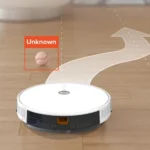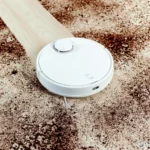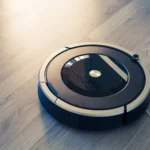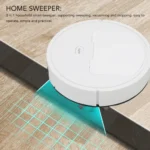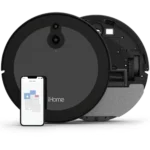The convenience of having a smart vacuum cleaner roam around your home doing the cleaning is unbeatable. However, when it suddenly stops working, frustration sets in, and you may not be sure what to do next. Is it a major issue that requires a professional’s attention? Or can you fix it yourself with some simple troubleshooting tips? In this article, we’ll explore some common problems that smart vacuum cleaners can face and provide you with step-by-step solutions to help you get your cleaner working again. So, sit tight and get ready to dive into the world of DIY troubleshooting tips for your smart vacuum cleaner.
Common Problems and Solutions
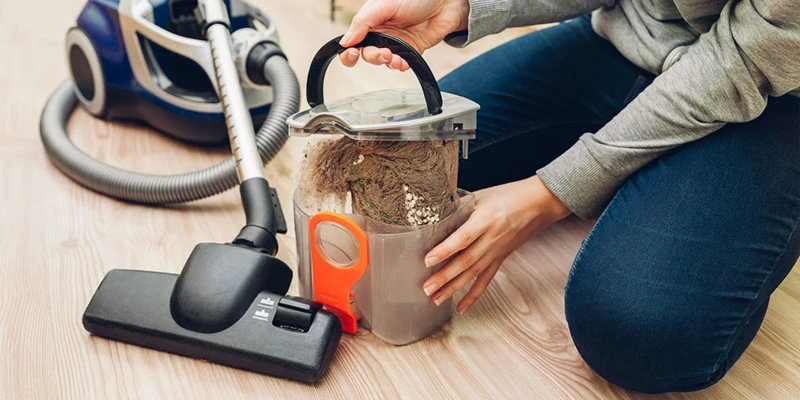
Are you having trouble with your smart vacuum cleaner? Don’t worry, you’re not alone. While these devices are convenient and efficient, they can still experience technical difficulties. In this section, we will cover some of the most common problems that users face and provide step-by-step solutions to get your vacuum cleaner back up and running. From troubleshooting tips for a vacuum cleaner that won’t turn on or move, to addressing issues with debris and noise, we’ll have you covered. And, if you want to learn more about maintenance tips and long-term savings for smart vacuum cleaners, be sure to check out our smart vacuum maintenance guide.
1. The Vacuum Cleaner is Not Turning On
When your smart vacuum cleaner doesn’t turn on, this can be a frustrating experience. But there are several reasons why this might be happening, and several solutions to try at home before calling in a professional.
Common Problems and Solutions for a non-turning smart vacuum cleaner
| Problem | Solution |
|---|---|
| The vacuum cleaner is not connected to a power source | First, make sure the power cord is properly plugged into the vacuum cleaner and to a working outlet. If this doesn’t work, try plugging another appliance into the outlet to check if it’s functional. |
| The vacuum cleaner’s battery is dead | If your vacuum cleaner runs on battery power, check if it’s fully charged. If it isn’t, try charging it for a few hours and then turning it on again. If it’s still not working, try replacing the battery with a new one. |
| The vacuum cleaner is overheated | Smart vacuum cleaners might shut down if they get too hot when in use. To prevent this, empty the dustbin before each use and clean the filter regularly. If the vacuum cleaner has overheated, unplug it and let it cool down for at least an hour before trying again. |
| The vacuum cleaner’s motor is damaged | If you hear a strange noise, smell something burning or notice any other unusual signs when trying to turn on the vacuum cleaner, it may be an indication that the motor is damaged. In this case, it’s best to contact the manufacturer or a professional cleaner to assess the issue. |
By following these troubleshooting tips, you should be able to get your smart vacuum cleaner up and running again in no time. If these solutions don’t work, you may want to consider contacting the manufacturer or a professional cleaner for further advice.
For more tips on smart vacuum cleaner maintenance and troubleshooting, check out our article on smart vacuum maintenance tips.
2. The Vacuum Cleaner Does Not Move
When your smart vacuum cleaner does not move, it can be frustrating and prevent the robot from efficiently cleaning your home. This issue can be caused by several factors, which will require different troubleshooting techniques. Below are some common problems and solutions to help you fix your smart vacuum cleaner when it is not moving.
| Problem | Solution |
|---|---|
| The wheels are stuck or not working. | You need to check the wheels for debris, such as hair, threads, or debris buildup, that can affect the wheels’ movement. Clean the wheels, and try turning the wheels with your hands to see if they are functioning correctly. Some smart vacuum cleaners, like the iRobot Roomba, have gears that can be removed and cleaned. If the wheels are still stuck, you may have to replace them. |
| The sensors are blocked. | Smart vacuum cleaners use sensors to detect and avoid obstacles, but over time, dust and debris can accumulate on the sensors, causing the robot to stop moving. You can clean the sensors with a microfiber cloth or compressed air spray, following the manufacturer’s instructions on the user manual. If the sensors are damaged, you may need to replace them. |
| The brush roll is jammed. | In some cases, debris like hair, threads, or fibers can wrap around the brush roll, preventing it from spinning correctly. You need to take the brush roll out, clean it carefully, and check for any damages. You can also replace the brush roll if it is beyond repair. Watch out for any signs of wear on the bristles or belts, as they can affect the vacuum’s efficiency. |
| The battery is low or needs replacement. | If the battery is low, the smart vacuum cleaner may not have enough power to move or navigate. Make sure that the battery is fully charged before running the vacuum again. If the battery is not charging or holding a charge, you may need to replace it. Consult your user manual or contact the manufacturer for instructions on battery replacement. |
By following these troubleshooting tips, you can troubleshoot your smart vacuum cleaner when it is not moving. It’s worth noting that your smart vacuum cleaner may have additional features or issues, so read the user manual carefully, and contact the manufacturer for expert support when necessary. Remember, regular maintenance and proper use can prevent many issues with smart vacuum cleaners.
If you want to learn more about smart vacuum cleaners, you can check out our article on smart vacuum tips or budget-friendly vacuum cleaners under $200 for a comparison review of traditional and smart vacuum cleaners, including long-term savings, filters, maintenance mistakes to avoid, brush roller replacement, and warranty repair.
3. The Vacuum Cleaner is Leaving Debris Behind
One strange issue that you may encounter while using a smart vacuum cleaner is that it may leave debris behind. The problem could stem from several issues, which can make it difficult to diagnose.
Below is a table that outlines potential reasons why your vacuum cleaner may be leaving debris behind and what you can do to fix the problem:
| Potential Reasons | Solution |
|---|---|
| Clogged filters: If the filters in your vacuum cleaner are clogged with dirt, dust, and hair, they can affect the suction power and prevent the device from adequately picking up additional debris. | Make sure to clean or replace the filters regularly. Refer to the manufacturer’s manual for instructions on how to do this properly. Check out our article on smart vacuum filters for more in-depth information. |
| Full dustbin: If the dustbin is full or close to full, your vacuum cleaner may leave some debris behind. | Empty the dustbin regularly as recommended by the manufacturer to avoid this issue in the future. |
| Brush roller maintenance: If the brush roller is clogged with hair or other debris, it can prevent the device from picking up additional debris. | Clean or replace the brush roller as necessary. You can find more information on how to do this in our article on smart vacuum brush roller replacement. |
| Worn-out brush roller: If the brush roller is severely worn, it may not function correctly, leaving debris behind. | If cleaning doesn’t work, you may need to replace the brush roller altogether. Refer to our article on smart vacuum brush roller replacement for more information. |
Remember to always follow the manufacturer’s instructions on how to maintain and operate your smart vacuum cleaner correctly. Proper maintenance can extend the life of your device and prevent technical issues in the future.
If your smart vacuum cleaner is leaving debris behind, it may have a problem with its suction power or cleaning mechanisms. Always check the dustbin, filters, and brush roller for clogs or wear and tear, and make sure to clean and replace them regularly. You can find more information on smart vacuum maintenance in our article on smart vacuum maintenance mistakes to avoid.
4. The Vacuum Cleaner is Making Weird Noises
One of the most common issues people face with their smart vacuum cleaners is when it starts making weird noises. It can be quite perplexing when you hear strange sounds coming out of a device that is supposed to make your life easier. Here are some reasons why your smart vacuum cleaner might be making weird noises and what you can do to fix them.
| Possible Reason | Possible Solution |
|---|---|
| 1. Clogs in the vacuum cleaner | Clear the clogs and debris from the vacuum cleaner’s brushes and rollers. Check the filters and clean them too. |
| 2. Loose or damaged parts | If you can hear rattling or clunky noises, there is a chance some parts of your device may be loose or damaged. Check your vacuum cleaner’s brush roll or nozzle if they are shaking or vibrating. Tighten the screws or fasten the loose parts. If you can see visible damage, you may need to get it fixed or replaced. If your vacuum cleaner is still under warranty, get in touch with the manufacturer for a repair or replacement. |
| 3. Problems with the motor | If your vacuum cleaner is making grinding or whirring sounds, there is a high chance that there is a problem with the motor. In this case, it is recommended to get in touch with the manufacturer as soon as possible. They will guide you on what needs to be done or schedule a repair service for your device. It is better not to attempt to fix the motor problem on your own, as you could cause further damage or even lead to injury. |
Weird or loud noises from your smart vacuum cleaner should never be ignored. It is vital to identify the issue and fix it as soon as possible to avoid any long-term damage to your device. Regular maintenance of your smart vacuum cleaner is crucial too. Keep in mind that investing in a smart vacuum cleaner is a long-term investment in keeping your home clean and healthy, so taking good care of it is essential.
5. The Vacuum Cleaner is Not Connecting to Wi-Fi
One of the most common problems that you may face with your smart vacuum cleaner is the inability to connect it to Wi-Fi. This can be frustrating when you are unable to control the device using the associated mobile application or voice commands. Here are some troubleshooting tips to try when facing this issue:
- Check Your Wi-Fi Signals: The first thing to do when your vacuum cleaner is not connecting to Wi-Fi is to check the signal strength of your Wi-Fi network. Make sure that your router is functioning properly, and that your smart vacuum cleaner is within the range of your Wi-Fi signals. Signal strength can depend on various factors such as walls and distance, so try moving the device closer to the router if it is not within range or connect to a different network with a stronger signal.
- Restart the Device: Restarting the device may help to resolve Wi-Fi connectivity issues, so try turning off your vacuum cleaner and turning it back on after a few seconds.
- Reset the Wi-Fi Connection: If your smart vacuum cleaner is still not connecting to Wi-Fi, resetting the Wi-Fi connection is another option. This can typically be accomplished by using the mobile application associated with the device and going to the “settings” section. Look for an option to “reset the Wi-Fi connection” or “remove device from the app” and follow the prompts.
- Check for Firmware Updates: Firmware updates can sometimes address connectivity issues with smart vacuum cleaners. Check to see if there are any firmware updates available for your device and install them if there are any. Your mobile application may have a separate section for firmware updates, so be sure to check there as well.
- Contact Customer Support: If none of the above tips work to resolve Wi-Fi connectivity issues, contact customer support for your device. They may be able to provide further troubleshooting or a more advanced solution to the problem.
Wi-Fi connectivity issues can be frustrating to deal with, but trying out these troubleshooting tips can often help solve the problem. Remember to check for signal strength, reset connections, check for firmware updates, and reach out to customer support if needed.
6. The Vacuum Cleaner is Not Responding to Remote Control
One of the most convenient features of smart vacuum cleaners is their remote control capabilities. However, it can be incredibly frustrating when your vacuum cleaner isn’t responding to its remote. Here are some steps you can take to troubleshoot this issue:
1. Check the batteries: Before trying anything else, it’s crucial to make sure that the remote control’s batteries are working correctly. Try replacing them with fresh batteries.
2. Check the connection: Make sure that the vacuum cleaner and the remote control are properly connected. Sometimes, the connection can be disrupted, which will prevent the remote from working correctly. Check to see if there is anything blocking the connection.
3. Reset the remote: Try resetting the remote by removing the batteries for a few minutes and then replacing them. This may help to reset the connection and solve the issue.
4. Restart the vacuum cleaner: If the remote control still isn’t working, try restarting the vacuum cleaner itself. Sometimes, this can reset the connection between the two devices.
5. Contact customer service: If none of these solutions work, it may be time to contact customer service. They’ll be able to help you further troubleshoot the problem and get your vacuum cleaner working again.
Remember, when troubleshooting any electronic device, it’s essential to remain patient and stay calm. With these tips, you’ll hopefully be able to get your vacuum cleaner working again, so you can get back to enjoying a clean home.
An Overview of Smart Vacuum Cleaners
Smart vacuum cleaners are no longer a thing of the future – they are a reality for households everywhere. These intelligent devices offer a level of convenience that was previously unheard of, allowing homeowners to sit back and relax while their smart vacuums take care of the cleaning. In this section, we will delve deeper into the workings of these machines, their advantages over traditional models, and some tips for maintaining them to extend their lifespan. So, let’s explore the world of smart vacuum cleaners together.
1. How Smart Vacuum Cleaners Work
Smart vacuum cleaners use advanced technology to navigate around and clean homes with little to no human intervention. They operate using a variety of sensors, brushes, and suction mechanisms that work together to ensure that your floors are kept clean.
Sensors
One of the most important features of smart vacuum cleaners is the sensors they use to navigate. These sensors allow the vacuum to detect obstacles and edges, and map out the layout of your home. This information is then used to create a cleaning path that covers all areas of the floor.
Brushes
Smart vacuums also use brushes to agitate and loosen dirt, dust, and hair from carpets and hard floors. Some models use a combination of bristle brushes and rubber brushes to ensure that every inch of your floor is cleaned thoroughly.
Suction Mechanisms
The suction mechanism of a smart vacuum cleaner is responsible for actually picking up the dirt and debris from your floor. These vacuums typically use cyclonic suction to pull in and trap dirt in a dustbin, which can later be emptied.
Navigation
In addition to sensors, smart vacuum cleaners use mapping technology to navigate around your home. They typically use cameras, lasers, or infrared sensors to create a 3D map of your home, which is then used to plan the most efficient cleaning path. This means that the vacuum will be able to cover every inch of your floor while avoiding obstacles like furniture and stairs.
Battery Life
Smart vacuum cleaners are usually designed to operate for extended periods of time without needing to be recharged. Most models have a battery life of up to 120 minutes, although this can vary depending on the size of your home and the cleaning mode used.
Connectivity
Many smart vacuums come equipped with Wi-Fi connectivity, allowing you to control and monitor the vacuum from your phone. This means that you can start, stop, or schedule cleaning sessions remotely, and even receive alerts when the vacuum has finished cleaning.
Smart vacuum cleaners use a combination of sensors, brushes, suction mechanisms, mapping technology, and Wi-Fi connectivity to clean your floors with minimal human intervention. These features ensure that your floors are kept clean, even in hard-to-reach areas, and that you have complete control over the cleaning process.
2. Comparison of Smart Vacuum Cleaners with Traditional Vacuum Cleaners
When it comes to cleaning your home, traditional vacuum cleaners have been around for decades. However, with the advancement in technology, smart vacuum cleaners have become increasingly popular. Let’s take a closer look at the comparison between smart vacuum cleaners and traditional vacuum cleaners.
1. Efficiency: Smart vacuum cleaners are more efficient than traditional vacuum cleaners as they are designed to clean the entire surface of a room without human intervention. They can map out the entire room and avoid obstacles like furniture on their own, ensuring that every spot is cleaned.
2. Multi-Tasking: Most smart vacuum cleaners have the ability to perform multiple tasks with just one device. They can sweep, mop and dust the floors in one go, removing the need for additional cleaning equipment.
3. Remote Management: One of the biggest advantages of smart vacuum cleaners is that they can be remotely managed. You can schedule the cleaning time and frequency, as well as control it through your smartphone. On the other hand, traditional vacuum cleaners require constant manual involvement.
4. Price: Smart vacuum cleaners are more expensive than traditional vacuum cleaners. However, it’s important to note that the features offered by smart vacuum cleaners are worth the additional investment.
5. Maintenance: Smart vacuum cleaners require less maintenance than traditional vacuum cleaners. They typically have self-cleaning brushes and filters, which means less time and effort is required to clean them.
Smart vacuum cleaners, with their advanced technology and convenience, are definitely worth considering if you’re in the market for a new vacuum cleaner. While traditional vacuum cleaners have been around for years and are more affordable, the added features of smart vacuum cleaners make them a worthwhile investment for homeowners.
3. Maintenance Tips for Smart Vacuum Cleaners
Smart vacuum cleaners have become an essential tool for modern living. They help alleviate the burden of cleaning our homes and apartments, and they make life easier overall. However, like any other electronic device, smart vacuums require proper maintenance to ensure optimal performance. Here are some maintenance tips to keep your vacuum working properly:
| Tips | Description |
|---|---|
| Clean the Brushes Regularly | The brushes on your smart vacuum cleaner collect dirt, debris, and hair over time. Regularly cleaning these brushes will prevent them from becoming clogged and keep your vacuum functioning efficiently. |
| Keep its Sensors Clean | Smart vacuum cleaners rely heavily on their sensors to navigate your home. If these sensors become dirty or obstructed, it can cause your vacuum to malfunction. Ensure you clean the sensors regularly to avoid any issues. |
| Empty the Dustbin Frequently | Smart vacuum cleaners are efficient at cleaning, but they can only hold so much debris in their dustbin. Empty the dustbin frequently to ensure that your vacuum never gets bogged down with dirt. |
| Check for Firmware Updates | Smart vacuum cleaners receive firmware updates from time to time to improve their functionality. Ensure you check for such updates and upgrade your device if necessary. |
| Replace Parts as Needed | Smart vacuum cleaners have replaceable parts such as brushes and filters. Ensure that you replace these parts as they wear down to maintain proper vacuum function. |
If you follow these maintenance tips regularly, you’ll be able to keep your smart vacuum cleaner in good working condition, preventing malfunctions and ensuring optimal performance. Remember, the better you maintain your vacuum, the longer it will last.
Conclusion
In conclusion, while smart vacuum cleaners certainly offer a lot of benefits, they also come with their own unique set of issues. However, armed with the troubleshooting tips we’ve outlined here, you should be able to identify and address most problems that arise with your smart vacuum cleaner.
Remember to read the manual and consult with the manufacturer before attempting any repairs, as opening up the device yourself can void the warranty and potentially cause even more problems. Additionally, regular maintenance can help prevent many common issues from occurring in the first place.
Overall, investing in a smart vacuum cleaner can be a great decision for tech-savvy homeowners who are looking to make their lives easier. However, like any piece of technology, they require some knowledge and effort to keep running smoothly. By taking the time to troubleshoot and maintain your device, you can continue to enjoy the convenience and benefits that a smart vacuum cleaner provides.
Frequently Asked Questions
1. Why is my smart vacuum cleaner not charging?
There could be several reasons why your smart vacuum cleaner is not charging, such as faulty charging components, a low battery life or a damaged battery. Try replacing the charging cord and charger to see if that resolves the issue.
2. How often should I empty the dustbin on my smart vacuum cleaner?
You should empty the dustbin on your smart vacuum cleaner after every cleaning session. This will ensure maximum cleaning efficiency and also prevent any damage to the vacuum’s motor.
3. Can my smart vacuum cleaner clean carpets?
Yes, most smart vacuum cleaners are designed to clean carpets. However, the effectiveness of a smart vacuum cleaner on carpets can vary depending on the type and thickness of the carpet.
4. How do I reset my smart vacuum cleaner?
You can usually reset your smart vacuum cleaner by pressing and holding the power button for a few seconds. Check the user manual for specific instructions on how to reset your model.
5. Why is my smart vacuum cleaner not connecting to Wi-Fi?
There could be several reasons why your smart vacuum cleaner is not connecting to Wi-Fi, such as a weak signal or incorrect login credentials. Try moving the vacuum closer to the router or resetting the Wi-Fi password.
6. Can I schedule cleaning times on my smart vacuum cleaner?
Yes, most smart vacuum cleaners have a scheduling feature that allows you to set specific cleaning times and days. This can be helpful for maintaining regular cleaning without having to manually start the vacuum each time.
7. Can I use my smart vacuum cleaner on multiple floors?
Yes, you can use your smart vacuum cleaner on multiple floors. However, you may need to adjust the settings depending on the type of floor and any obstacles present in the area.
8. How do I clean the brushes on my smart vacuum cleaner?
You can clean the brushes on your smart vacuum cleaner by removing them from the vacuum and using a brush tool to remove any tangled hair or debris. Rinse the brushes with warm water and allow them to air dry before reattaching them to the vacuum.
9. Can my smart vacuum cleaner navigate around furniture?
Yes, most smart vacuum cleaners are equipped with sensors and mapping technology that allow them to navigate around furniture and other obstacles. However, some models may have difficulty navigating tight spaces or cluttered rooms.
10. How do I check for software updates on my smart vacuum cleaner?
Check the user manual for specific instructions on how to check for software updates on your smart vacuum cleaner. Some models may have an automated update feature or require manual updating through a mobile app or website.

